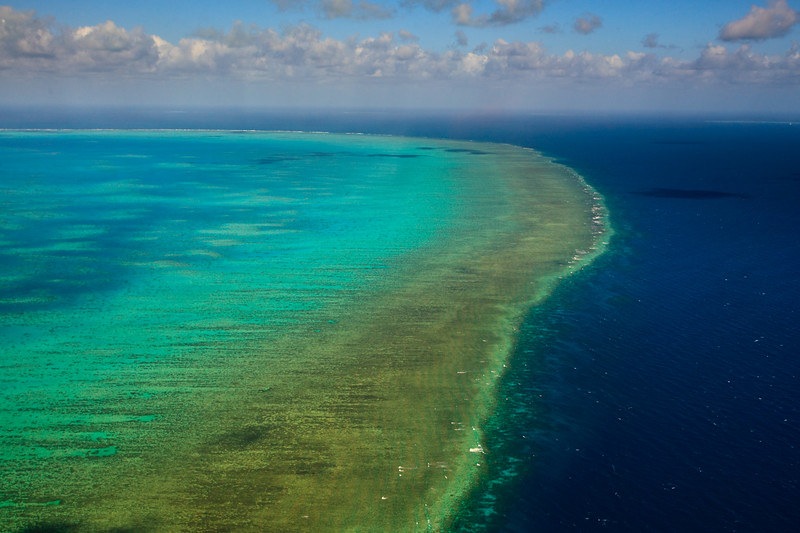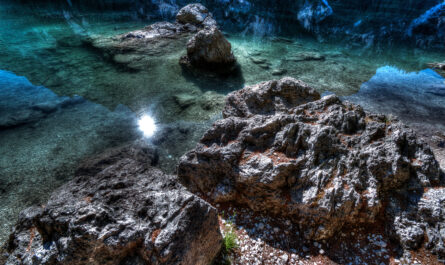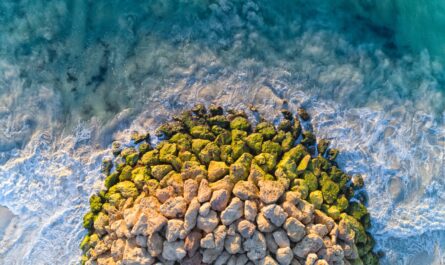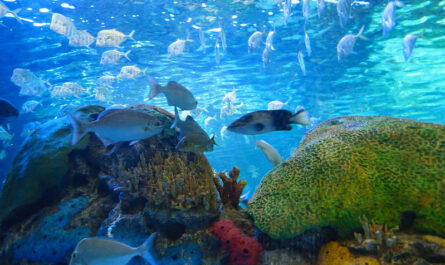The Coral Triangle, stretching across the waters of Indonesia, Malaysia, the Philippines, Papua New Guinea, Timor-Leste, and the Solomon Islands, is one of the world’s most important marine ecosystems. Spanning an area of around 6 million square kilometers, it harbors 76% of the world’s coral species, thousands of fish species, and supports the livelihoods of millions of people who rely on its natural resources. Known as the epicenter of marine biodiversity, the Coral Triangle is home to the most extensive coral reef systems on Earth, but it is facing unprecedented threats due to climate change, overfishing, and habitat destruction.
In response to these challenges, the Coral Triangle Initiative on Coral Reefs, Fisheries, and Food Security (CTI-CFF) was established in 2009 by the six Coral Triangle countries. This regional partnership aims to safeguard the Coral Triangle’s biodiversity and ensure the sustainability of the resources that millions of people depend on for their livelihoods and food security.
1. The Ecological Importance of the Coral Triangle
The Coral Triangle is often referred to as the “Amazon of the Seas” because of its exceptional biodiversity. It contains over 500 species of reef-building corals, more than 3,000 species of fish, and numerous other marine animals, including sharks, whales, sea turtles, and manta rays. This region plays a crucial role in regulating the health of the oceans, supporting marine food webs, and maintaining the balance of marine ecosystems.
In addition to its ecological significance, the Coral Triangle is an essential source of economic sustenance. The region’s fisheries are among the most productive globally, providing food and employment to over 120 million people. Tourism, driven by the beauty and diversity of the reefs, is another major economic pillar in the Coral Triangle countries, particularly in hotspots like Bali, the Philippines, and Raja Ampat in Indonesia.
2. Formation and Goals of the Coral Triangle Initiative
The CTI-CFF was established as a multilateral partnership among the six Coral Triangle countries, with support from international organizations such as the Asian Development Bank (ADB), WWF, and The Nature Conservancy (TNC). The initiative is centered around five key goals aimed at protecting marine biodiversity and ensuring sustainable management of resources:
- Marine Protected Areas (MPAs): The establishment of MPAs across the Coral Triangle is a core objective. These protected zones are designed to safeguard critical marine habitats, ensure sustainable fish stocks, and improve the resilience of ecosystems to environmental changes. As of today, significant progress has been made in creating MPAs, including large-scale protected areas like the Raja Ampat Marine Park in Indonesia, home to over 1,500 species of fish and more than 600 species of corals.
- Sustainable Fisheries: Overfishing and unsustainable fishing practices, such as blast fishing and cyanide fishing, have decimated fish stocks in parts of the Coral Triangle. The CTI-CFF is working with local governments to implement sustainable fishing practices, enforce fishing regulations, and combat illegal fishing. A key strategy is the promotion of ecosystem-based fisheries management, which ensures that fish populations are harvested in a way that maintains the integrity of the broader marine environment.
- Climate Change Adaptation: With the Coral Triangle facing increasing impacts from rising sea temperatures, ocean acidification, and extreme weather events, climate change adaptation is a critical focus of the CTI-CFF. Local communities, especially those living in coastal areas, are provided with tools and training to adapt to changing environmental conditions, such as the restoration of mangroves and coral reefs, which act as natural buffers against storms and erosion.
- Endangered Species Protection: The Coral Triangle is home to many endangered species, including the hawksbill turtle, green sea turtle, and whale shark. The initiative works to improve law enforcement to protect these species from poaching and illegal trade. For example, by increasing patrols in MPAs and promoting community-based conservation programs, efforts have been made to monitor nesting sites and reduce threats to endangered marine life.
- Resilience of Marine Ecosystems: Building the resilience of coral reefs to withstand pressures from climate change and human activities is essential to the long-term health of the Coral Triangle. The CTI-CFF promotes coral restoration projects, mangrove reforestation, and efforts to reduce pollution and land-based runoff, all of which contribute to strengthening the resilience of these ecosystems.
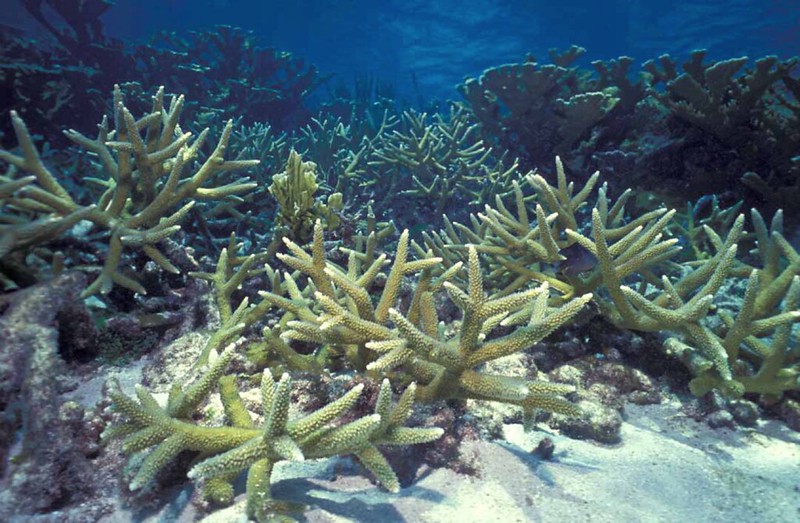
3. Achievements and Challenges of the Coral Triangle Initiative
Since its inception, the CTI-CFF has made notable strides in marine conservation across the Coral Triangle region. Some of the key achievements include:
- Expansion of Marine Protected Areas (MPAs): Significant expansions of MPAs across the Coral Triangle have created safe havens for marine species and allowed fish stocks to recover in many areas. Notable examples include the establishment of MPAs in Malaysia’s Tun Mustapha Park and Indonesia’s Wakatobi National Park.
- Community-Based Resource Management: The success of the CTI-CFF hinges on the involvement of local communities in managing marine resources. In many parts of the Coral Triangle, local fishers have been engaged in monitoring fish stocks and protecting coral reefs. In the Solomon Islands, for example, community-led initiatives have empowered villages to manage their marine resources, reduce destructive fishing practices, and promote sustainable tourism.
- Sustainable Fishing Practices: Several programs have been introduced to encourage sustainable fishing practices, such as the use of fish aggregation devices (FADs), which reduce the reliance on destructive methods like blast fishing. Additionally, training programs for local fishers have been developed to teach them more sustainable practices and introduce alternative livelihoods to reduce pressure on marine resources.
However, despite these successes, significant challenges remain. Climate change poses a severe threat to coral reefs, with coral bleaching events becoming more frequent. Weak enforcement of environmental regulations in some regions has allowed illegal fishing and destructive practices to persist, undermining conservation efforts. Additionally, the need for sustainable funding to maintain and expand conservation programs continues to be a pressing issue.
4. The Role of Technology and Research in Conservation
One of the most important developments in the CTI-CFF’s work has been the integration of technology and scientific research to better monitor and protect marine life. Satellite technology and GPS have been used to map marine ecosystems and identify critical habitats that require protection. Drones have been deployed to survey large and remote areas of the Coral Triangle, helping scientists monitor the health of coral reefs and track illegal fishing activities.
Additionally, coral reef monitoring programs have been established to assess the impacts of climate change and human activities on reef health. These programs provide valuable data that is used to inform conservation strategies and adaptive management efforts. In collaboration with international scientific institutions, the CTI-CFF continues to explore innovative solutions for mitigating the effects of climate change on coral reefs, including coral breeding and restoration projects.
5. The Future of the Coral Triangle Initiative
As the threats facing the Coral Triangle intensify, the need for global cooperation and increased policy enforcement becomes more urgent. Strengthening partnerships with international organizations, such as UNEP and the World Bank, will be crucial for providing the resources and expertise needed to sustain the region’s conservation efforts.
Furthermore, local education and empowerment are critical to ensuring the sustainability of these initiatives. By integrating sustainable development goals (SDGs) into regional policies and supporting alternative livelihoods, such as eco-tourism and sustainable aquaculture, the Coral Triangle countries can alleviate the pressure on marine ecosystems while promoting economic growth.
Conclusion
The Coral Triangle Initiative remains a beacon of hope in the fight to conserve one of the most biodiverse marine regions on the planet. With a focus on sustainable fisheries, marine protection, and climate resilience, the initiative is taking meaningful steps to safeguard the Coral Triangle for future generations. Continued efforts, cooperation, and innovation are crucial to addressing the ongoing challenges posed by climate change and human activity, ensuring that the Coral Triangle remains a thriving marine ecosystem that benefits both the environment and the millions of people who depend on it.
